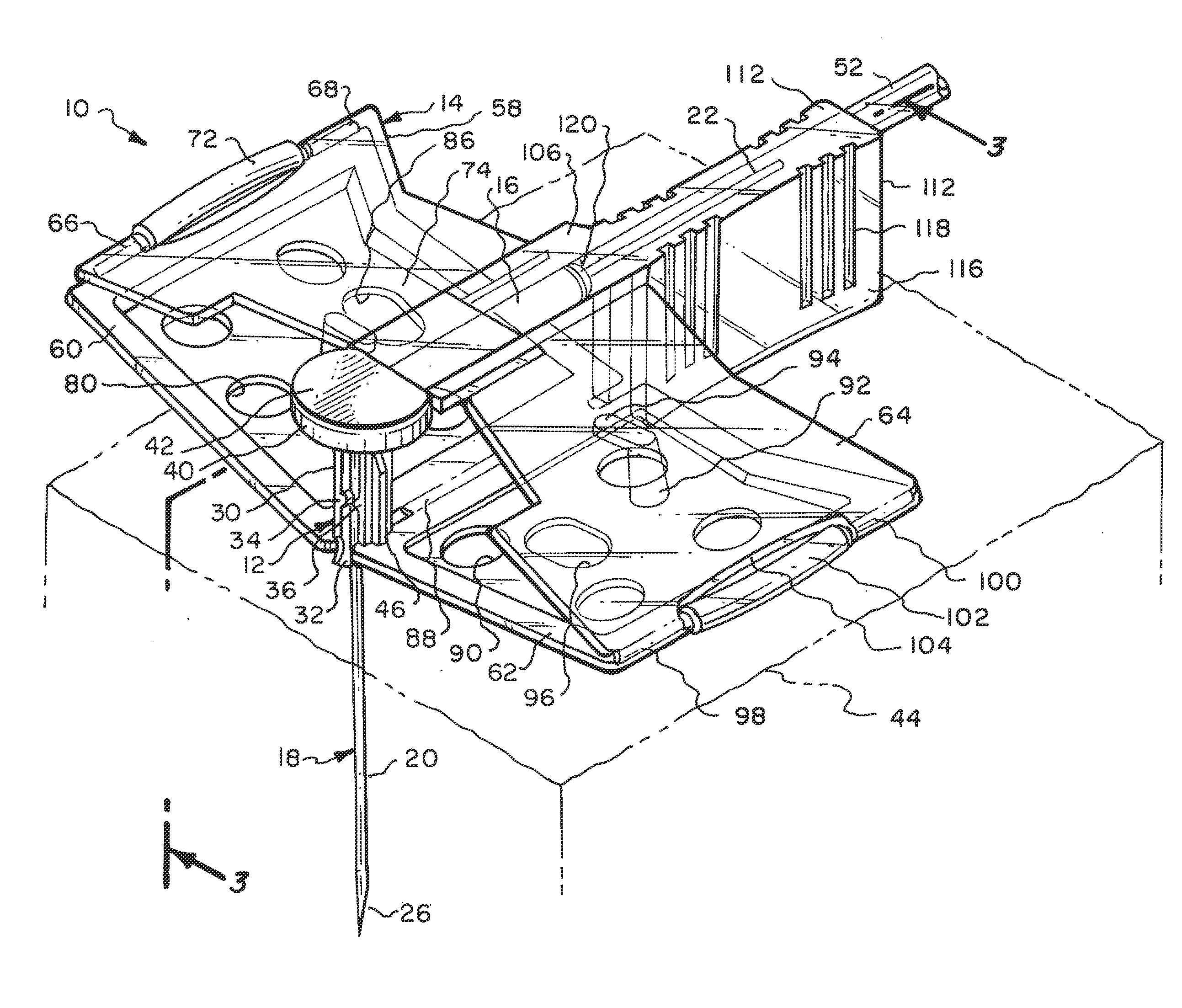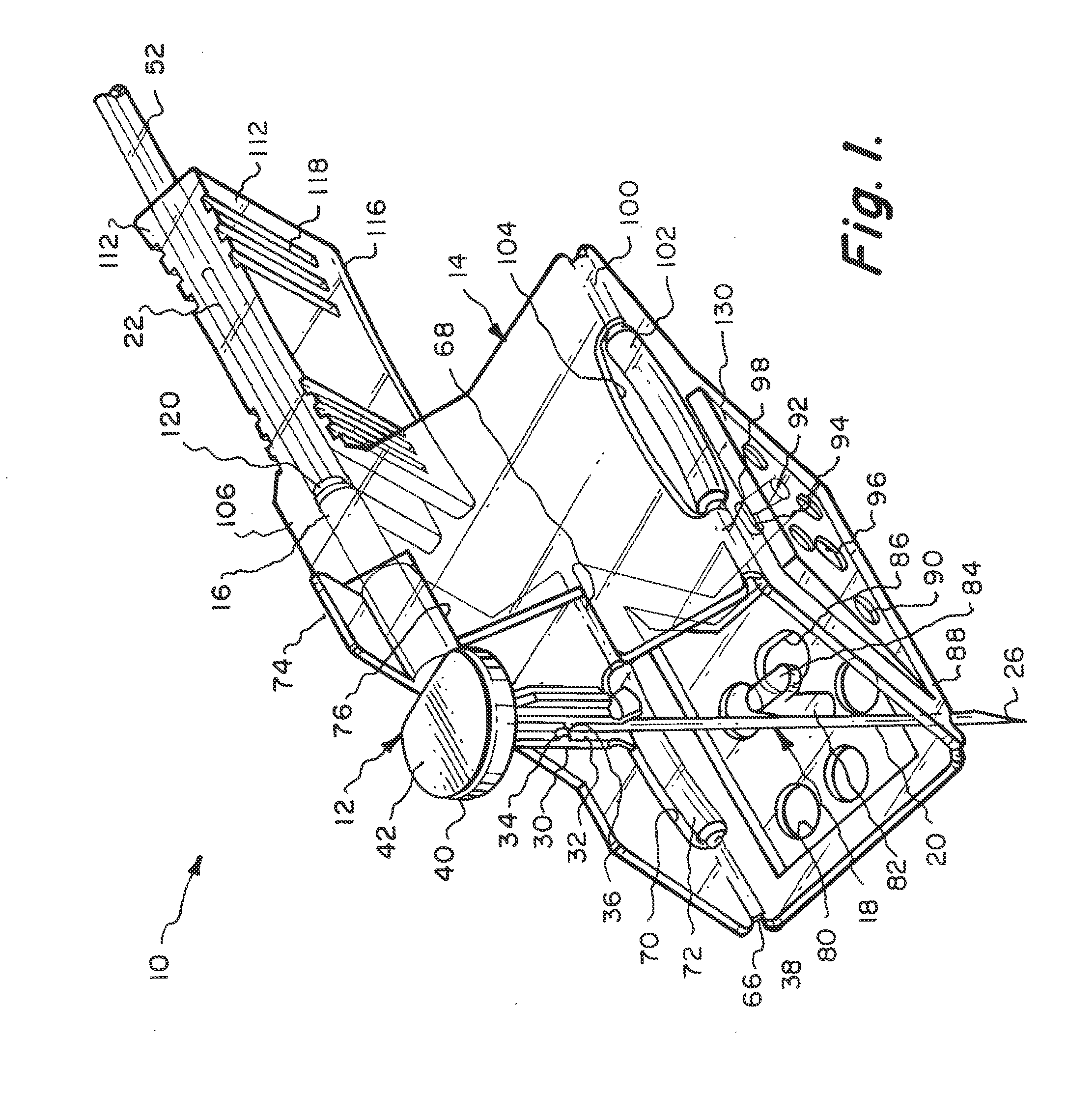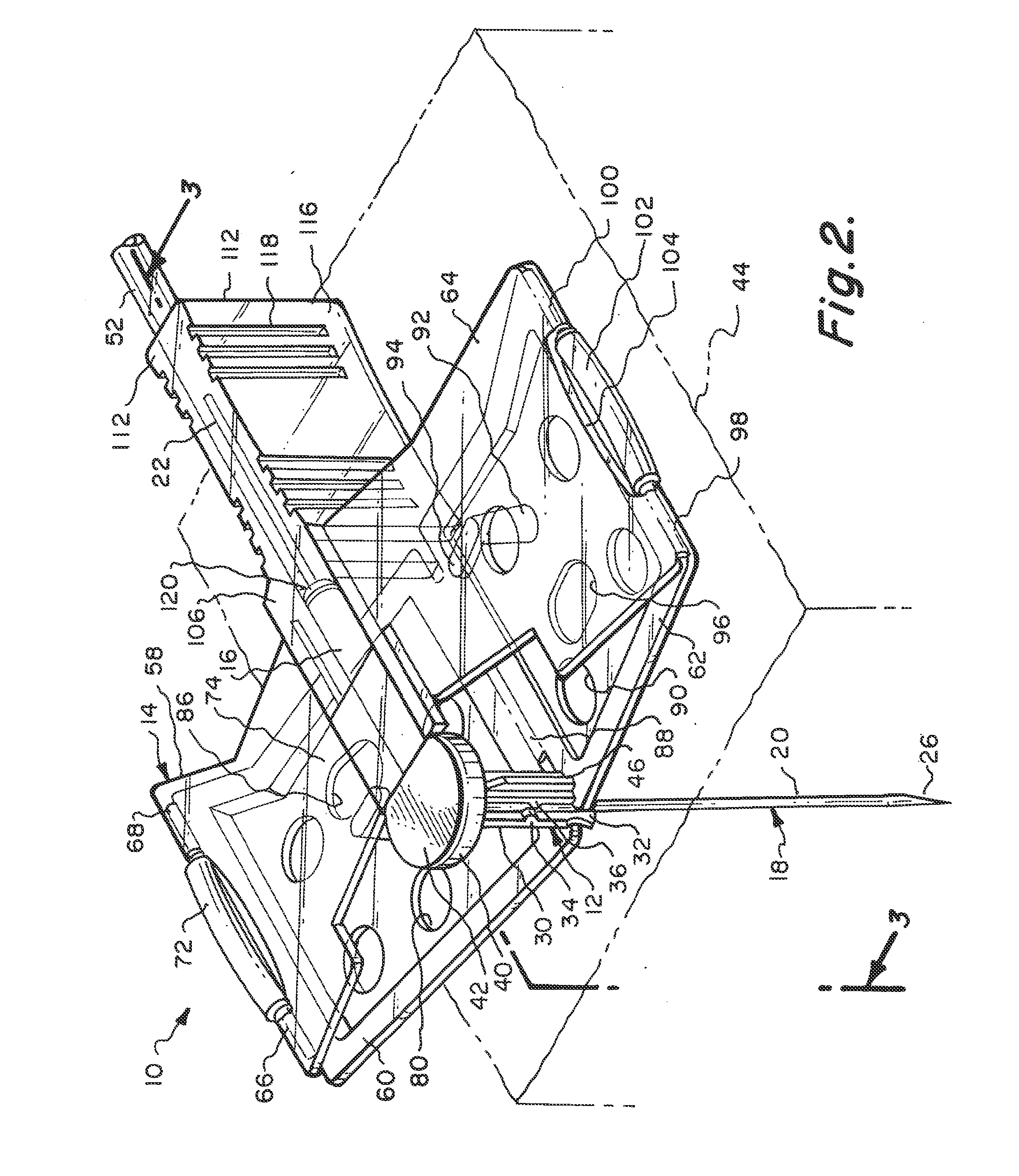Huber needle safety enclosure
a safety enclosure and needle technology, applied in the field of safety enclosures for hypodermic needles, can solve the problems of natural bounce back of needles, increased risk of needle removal at the end of infusion therapy, and increased risk of needle slipping, so as to prevent the needle from rocking
- Summary
- Abstract
- Description
- Claims
- Application Information
AI Technical Summary
Benefits of technology
Problems solved by technology
Method used
Image
Examples
Embodiment Construction
[0045]Referring particularly to the drawings, there is shown the Huber needle safety enclosure 10 of this invention. The safety enclosure 10 includes, generally, a needle housing 12 and a panel unit 14. The needle housing 12 includes an elongated cylindrical hinge tube 16 which is constructed of plastic as well as almost all of the components of this enclosure 10. The only part that is not constructed of plastic will be the Huber needle 18 itself, which will be constructed of metal.
[0046]The Huber needle 18 is in the shape of a right angle and has a fore end 20 and an aft end 22. The fore end 20 is connected to the aft end 22 at a bend 24. The free end of the fore end 20 is formed into a sharpened tip 26. The hinge tube 16 has a through passage 28. The aft end 22 of the Huber needle 18 is located in a close fitting but yet slidable manner within the through passage 28. Integrally connected to the hinge tube 16 at 20 its front end is a sleeve 30. Longitudinally formed within the slee...
PUM
 Login to View More
Login to View More Abstract
Description
Claims
Application Information
 Login to View More
Login to View More - R&D
- Intellectual Property
- Life Sciences
- Materials
- Tech Scout
- Unparalleled Data Quality
- Higher Quality Content
- 60% Fewer Hallucinations
Browse by: Latest US Patents, China's latest patents, Technical Efficacy Thesaurus, Application Domain, Technology Topic, Popular Technical Reports.
© 2025 PatSnap. All rights reserved.Legal|Privacy policy|Modern Slavery Act Transparency Statement|Sitemap|About US| Contact US: help@patsnap.com



